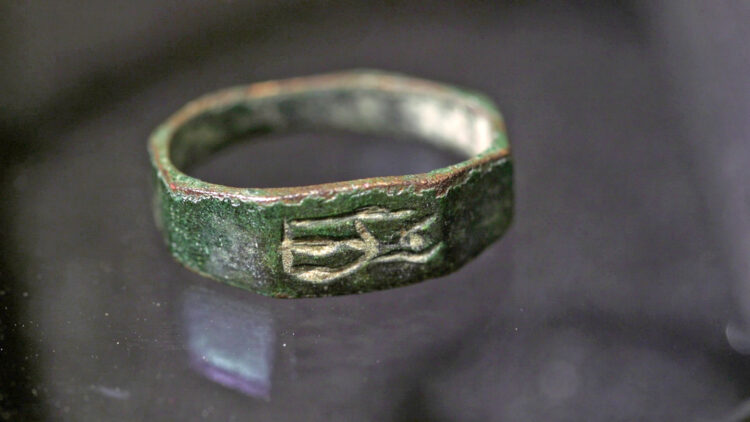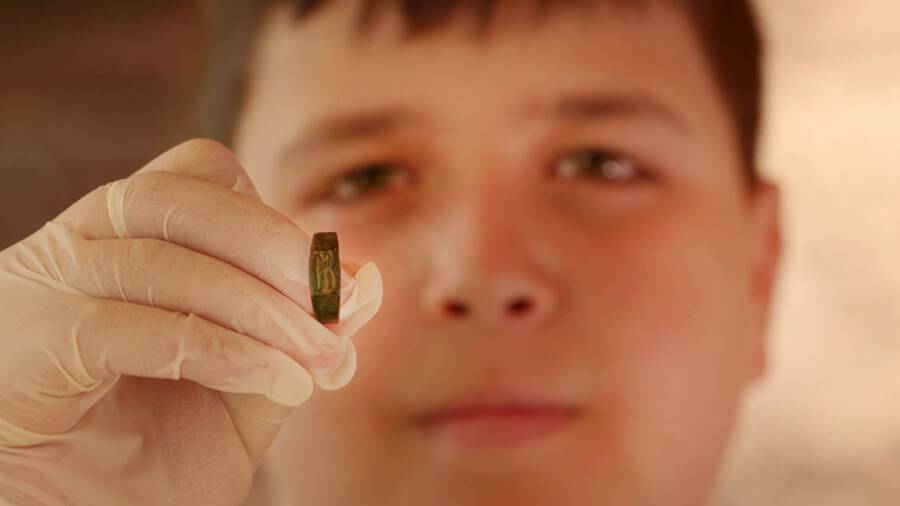An astonishing archaeological find has recently emerged from northern Israel, capturing the imaginations of historians and enthusiasts alike. During a routine hike in the Haifa region, a teenager stumbled upon an ancient artifact that has since been identified as an 1,800-year-old ring. This remarkable discovery, unearthed near an ancient quarry on Mount Carmel, sheds light on the Roman era and its deities, providing a fascinating glimpse into the past.
A Teenager’s Unexpected Discovery

The discovery was made by Yair Whiteson, a 13-year-old with a keen interest in rocks and fossils. While hiking with his father near an ancient quarry on Mount Carmel, Yair spotted a small green object partially buried in the ground. Initially believing it to be a rusty bolt, Yair’s curiosity led him to examine the item more closely. Upon realizing it was a ring, he took it home, where further inspection revealed an intricate engraving of a Roman goddess. Yair’s family promptly contacted the Israel Antiquities Authority (IAA), leading to the ring’s official evaluation.
Significance and Context

The ring, made of bronze, features an engraving of Minerva, the Roman counterpart of the Greek goddess Athena. Minerva is depicted wearing a helmet and holding a sword and spear, symbols of her dual role as the goddess of wisdom and war. According to Nir Distelfeld and Eitan Klein from the IAA, Minerva was a prominent figure in Roman culture, revered for her strategic acumen and intellectual prowess. The ring, dating back to the Late Roman period (2nd to 3rd centuries A.D.), likely belonged to a woman or girl from that era.
The ring was discovered at Khirbet Shalala, an archaeological site situated on a hilltop near the quarry. This site contains remnants of a Roman-period farmstead, providing valuable context for the ring’s origin. The area is also home to two burial caves, which raises several intriguing possibilities. Distelfeld and Klein suggest that the ring might have belonged to a local woman, a quarry worker, or could even have been a burial offering from one of the nearby graves.
Potential Origins and Future Display

While the exact origin of the ring remains uncertain, its discovery offers a wealth of historical and cultural insights. The artifact will be displayed at the Jay and Jeanie Schottenstein National Campus for the Archaeology of Israel in Jerusalem. This exhibition will allow the public to view the ring and appreciate its historical significance firsthand.
Conclusion
The discovery of the 1,800-year-old Roman goddess ring is a remarkable addition to the tapestry of ancient history. It not only highlights the artistic and cultural achievements of the Roman period but also underscores the continuous potential for archaeological discoveries to enhance our understanding of the past. Yair Whiteson’s find has provided a tangible connection to the ancient world, offering a unique glimpse into the lives and beliefs of people from nearly two millennia ago. As the ring goes on display, it will undoubtedly inspire further exploration and appreciation of our shared historical heritage.
